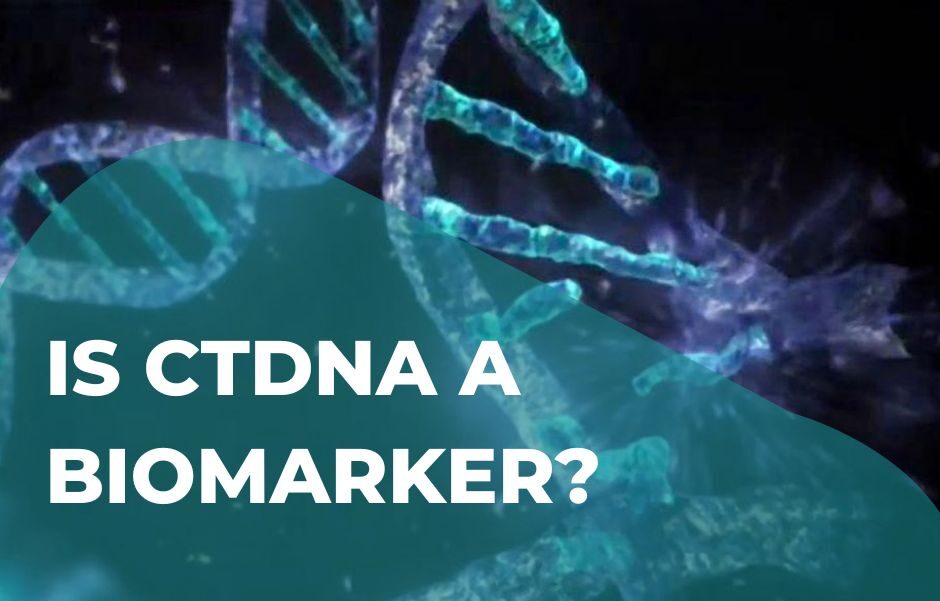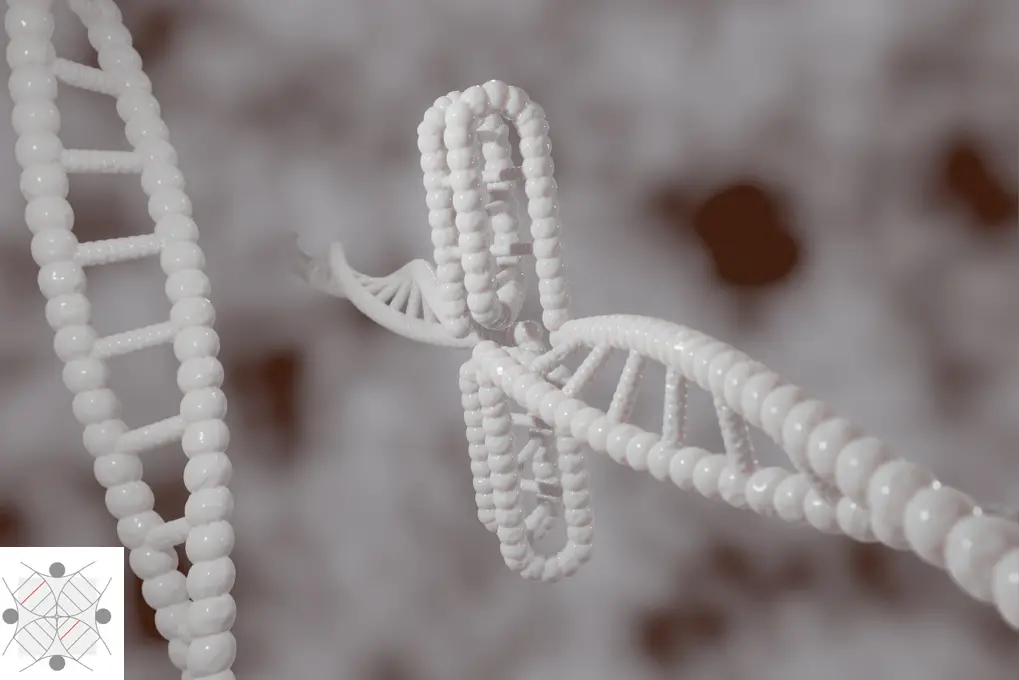“Circulating tumor DNA is present in the bloodstream and secreted by cancer cells. Recent studies suggest that scientists use these DNA fragments to study cancer. But is ctDNA a biomarker? And if so, how can it be used? Let’s find out.”
A tumor is a condition caused by uncontrolled cell growth and results in cancer. It’s a serious health issue and may lead to a patient’s death. Cancer rarely inherits and occurs by somatic mutations.
Genetic markers study such alterations and enable scientists to understand the type of cancer, however, have limitations. There are two common problems with this process.
Scientists perform genetic analysis by tissue biopsy. So the typical process is invasive and painful. Tumor (solid tissue) biopsy isn’t a feasible process in all cases. For example, to study a lung tumor, it’s difficult to collect a tissue sample from the lung. Likewise, the sample problem, scientists face for the pancreas, endocrine, kidney cancer, etc.
Secondly, markers either can predict a cancer stage, drug response or type of cancer but not all. Because every marker has so and so limitations. Collectively these two factors limit cancer genetic studies.
Liquid biopsy, like the use of blood, is an easy, minimally invasive and safer technique to study cancer and hence liquid biopsy-based markers are considered as an excellent tool. ctDNA is isolated from blood and so is a liquid biopsy-based marker. Let’s see how it can solve these problems.
“ctDNA is circulating tumor DNA, free-floating DNA fragments of tumor cells and can be used to study cancer, scientists believe.”
Key Topics:
Is ctDNA a biomarker?
In 1948, Mandel et al., explained the concept of cell-free DNA, however, in 1977 Leon et al., isolated cell-free DNA from a cancer patient. From here, this concept came to light.
ctDNA is free-fragments of tumor DNA, and a prominent cancer blood-based biomarker used not only for the screening and detection of cancer but also for prognosis, progression and drug response studies. It even can predict the size of the tumor, the cancer stage and the severity of the disease.
Tumor cell apoptosis, autophagy or necrosis releases free DNA into the blood and/or nearby liquid and we know it as ctDNA or simply, cell-free DNA. The presence of a higher amount of ctDNA is a clear indication of a particular type of cancer. However, the amount and type of fragments vary among different cancers.
ctDNA represents the entire tumor cell genome. So it is used to study and identify associated genomic variants. Take a look at some applications.
- Detection of tumor
- Tumor molecular profile
- Prognostic marker
- Detection of resistant mutations
- Determine tumor size and stage
- ctDNA clearance
One research study demonstrated that the amount of ctDNA is directly proportional to the stage of cancer. Cancer with early or first stage contains less amount while progressive and last stage cancer contains large amounts of ctDNA in the bloodstream.
The amount of ctDNA also demonstrates the severity and stage of cancer, a study on 650 cancer samples by Betterowda et al., 2014 from Ludwig Center for Cancer Genetics and Therapeutics, Howard Hughes Medical Institute and the Sidney Kimmel Comprehensive Cancer Centre at John Hopkins, Baltimore, USA showed.
This shows the significance of ctDNA in the pre, early and progressive cancer studies and staging. Another study on 20,000 patients also is in favor of this finding (a study by Zill et al., 2018 from Guardant Health, Inc., Redwood City, California).
Such evidence suggests that by only quantifying the ctDNA, the cancer progression can be monitored, studied and evaluated. This data helps to decide treatment options.
Another research manifested that the drug responses for a particular type of cancer can also be monitored by only looking after the ctDNA.
Research published by Parkinson et al., (2016) from the Cancer Research UK Cambridge Institute, University of Cambridge, UK demonstrated that the ctDNA methylation assay can also be used to measure the treatment response.
They have studied the TP53 ctDNA tumor marker for ovarian cancer, before and after the treatment. In favor of these findings, several other studies also showed that the positive treatment response led to faster ctDNA clearance which eventually is a sign of disease reduction.
Moreover, drugs that previously worked become ineffective due to somatic recurrent mutations. Such mutations can be studied by ctDNA sequencing and an expression profile.
So initial drug response, the success of therapy and the recurrence of cancer can be monitored by using the ctDNA biomarker.
Advantages of cfDNA as a biomarker
The technique is minimally invasive.
No pain, tedious tissue collection or patient immobilization is involved. DNA can be directly obtained from the patient’s blood plasma.
The technique is easy to perform and straightforward. Once we get DNA, we can sequence it and study the alterations.
It can study cancer from any stage.
It is less risky and doesn’t require repeat collection.
With the immense applications and advantages, it is also important to discuss the limitations of the present marker. ctDNA also has serious limitations.
Limitations
First, the concentration of DNA present in the sample is very low. And therefore, not always gives positive results. Second, there is yet not any standard available to tell high or low concentration.
However, tentatively the concentration of cell-free tumor DNA in normal individuals and cancer patients is 0 to 100 ng/ml and 100 to 1000 ng/ml, respectively, as explained in the research published by Estela et al., 2022, Liquid biopsy laboratory, Biomedical sciences research Institute, Puerta de Hierro-Majadahonda, Mahadahonda, Spain.
In addition, the half-life of fragments is also very short (~16 minutes to 2.5 hours) and comes up with heterogeneous nature. Such shortcomings limit the use of ctDNA as a biomarker in recent times.
Technical Note
Tumor cells release more free DNA in nearby fluids than in blood. However, blood tissue is the only circulating tissue that reaches almost all the body parts and hence is an excellent tool for this purpose.
For example, in particular lung cancer, the pleural fluid contains more amount of cell-free tumor DNA than blood.
One study on brain tumors depicts that ctDNA biomarkers are less likely to be useful for some cancer studies. For example brain tumors, due to the brain-blood barrier, less ctDNA is shed off in blood.
Note: FDA officially approved cfDNA methylation assay for cancer clinical use.
| ctDNA recommended | ctDNA isn’t recommended. |
| Breast, liver, ovarian, lung, stomach, liver, colon and bladder cancer. | Medulloblastoma, brain, kidney, thyroid and prostate cancer. |
Related articles:
Cancer Genetic Testing- What Is It & How It’s Done?
Wrapping up:
Technically, it’s a bit difficult to isolate DNA fragments for the serum. Nonetheless, scientists are hoping that ctDNA would work excellently in the near future. And possibly, several limitations can be managed.
Despite having some limitations, cell-free tumor DNA would be an excellent cancer clinical marker. However, for now, we have limited research, and fewer data and studies. I hope you like this article, if so, please share it and bookmark the page.
Sources:
Romero, A., & Provencio, M. (2022). Circulating Tumor DNA as a Cancer Biomarker: An Overview of Biological Features and Factors That may Impact on ctDNA Analysis. Frontiers in Oncology. https://doi.org/10.3389/fonc.2022.943253.
Bettegowda C, Sausen M, et al. Detection of circulating tumor DNA in early- and late-stage human malignancies. Sci Transl Med. 2014 Feb 19;6(224):224ra24.
Parkinson CA, Gale D, Piskorz AM, Biggs H, Hodgkin C, Addley H, Freeman S, Moyle P, Sala E, Sayal K, Hosking K, Gounaris I, Jimenez-Linan M, Earl HM, Qian W, Rosenfeld N, Brenton JD. Exploratory Analysis of TP53 Mutations in Circulating Tumour DNA as Biomarkers of Treatment Response for Patients with Relapsed High-Grade Serous Ovarian Carcinoma: A Retrospective Study. PLoS Med. 2016 Dec 20;13(12):e1002198.
Zill OA, Banks KC, Fairclough SR, Mortimer SA, Vowles JV, Mokhtari R, Gandara DR, Mack PC, Odegaard JI, Nagy RJ, Baca AM, Eltoukhy H, Chudova DI, Lanman RB, Talasaz A. The Landscape of Actionable Genomic Alterations in Cell-Free Circulating Tumor DNA from 21,807 Advanced Cancer Patients. Clin Cancer Res. 2018 Aug 1;24(15):3528-3538.
Subscribe to our weekly newsletter for the latest blogs, articles and updates, and never miss the latest product or an exclusive offer.



